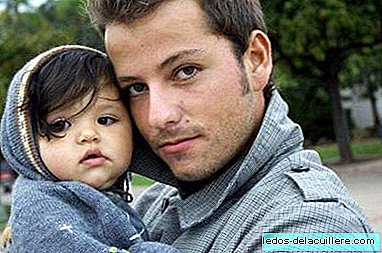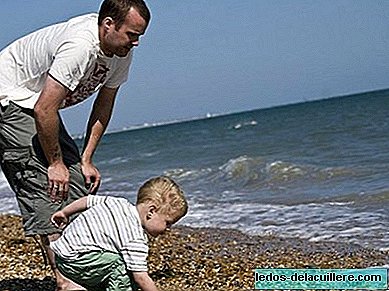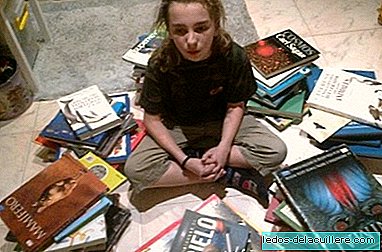
Experts are blunt: child deafness is corrected in 100 percent of cases if the child receives the appropriate treatment before the age of two.
According to data from the INE (National Institute and Statistics) five out of every 1,000 children are born with a hearing problem in Spain. And in one out of every thousand cases, deafness is profound. But their early detection and proper treatment will allow them to enjoy quality hearing and achieve normal intellectual development. And much of that success is due to the placement of Cochlear implants in babies with deep deafness.
Dr. Gracia Aranguez Moreno, ENT coordinator of the Childhood Hearing Detection, Diagnosis and Treatment Program at the Gregorio Marañón University General Hospital in Madrid, explains the importance of place them before two years "When the baby's neuronal plasticity is the most optimal, the brain is more sensitive to auditory stimulation and language learning," but also what they consist of and when they are placed.
Early detection of hearing loss
WHO notes that deafness affects 32 million children worldwide. And in Spain, 2,500 babies are born deaf every year. And we must all be attentive, because more than 97% of deaf children have hearing parents. Hence, in 2003, the Ministry of Health and Consumer Affairs and the Autonomous Communities approved in 2003 the 'Program for the Early Detection of Deafness' for its implementation in all Spanish maternity hospitals.
As Dr. Aranguez details, hearing problems are very easy to detect with very simple tests the day after birth and medical advances do not stop. So if deep deafness is detected, "bilateral cochlear implants are usually the solution."

How to cure deep deafness
“Before the cochlear implant was placed on babies even with three months, but it has been discovered that this treatment so early does not offer more advantages than if we implant it a little later and yes more risks due to the child's age” explains Gregorio Marañón. "The implantation between 10 and 18 months"adds the expert.
Though between 90 and 95 percent of babies born with deep deafness can be implanted, warns that "you cannot generalize and that you have to study each case individually, as there may be associated pathologies."
The causes of lack of hearing at birth can be varied: genetic inheritance, problems of the baby during pregnancy or childbirth, premature birth, maternal infections during pregnancy or the intake of any medication ...
This results in a bilateral deafness, “which is why today we perform two simultaneous implants,” explains Gracia Aranguez. “Thus we achieve that their level of learning is the same as that of any other child who hears well and does not suffer delays in language acquisition.
Children use all the senses they have to learn, particularly language, and it has been shown that children who are born deaf can obtain great benefits from implants, and integrate perfectly into ordinary schools or be completely normal bilinguals.
What is an implant and how does it work?
It consists of two parts: an electronic device that is implanted under the skin by surgery and an external processor that is placed behind the ear. Its function is to replace the affected part of the ear transforming sounds into electrical signals that are sent directly to the auditory nerve.
- The sound is captured with a microphone in the external processor.
- The processor converts the captured sound into detailed digital information.
- The magnetic receiving antenna transmits the digital signals to the internal implant under the skin.
- The implant converts the digital information received into electrical information that runs through the electrode array, along the cochlea, to the auditory nerve.
- The auditory nerve sends impulses to the brain where they are interpreted as sound.
The hearing of children with implants is different from a normal one, because it is not natural, but it is as clear as that of a small child without problems of deafness. It seems that at first the sounds are very high, like a robot, but after a while your brain adapts thanks to its neuroplasticity.
And although in view of the results it seems that the normalization of deafness is on the right track, Dr. Gracia Aranguez believes that there are still steps to be taken, such as “getting all implant centers to use the same treatment criteria and that Health verify They are performed in all hospitals. It is necessary to emphasize that if the hearing loss is detected before two years of life, the child will lead a normal life ”.
Opinions of affected
Medical specialists are clear that cochlear implants are a fantastic option for babies with deep deafness to integrate seamlessly into society, who live this type of disability also seem to agree, although there is always a discrepant voice.
An example is this deaf dad who advocates in a conversation the use of implants in babies, with medical and personal arguments. Or Loles Sancho, mother of Aitana, a six-year-old deaf girl with cochlear implants. His blog and his book 'SOS, my daughter is deaf' are born from the love of a mother to help her little girl. His tweets deserve a reading.
It will save a lot of obstacles and problems, you will have easier life, etc. Believe me, if I could heal myself (I can't) I would.
- Tecnopapa (@Anacardoide) May 4, 2017
I do not know if you can stop for a moment to think about the daily life of a deaf child. I tell you in this post #sosmihijaessorda #sordos #sordera #functional diversity #disability #implantecochlear //t.co/4IirChdyyC pic.twitter.com/Bj1aL3TkBR
- Loles Sancho (@lolessancho) July 12, 2018
In Babies and More Have you heard that? Sound stimuli are key to the development of baby's language, why it is beneficial to teach sign language to babies. Interview with Miriam Escacena of Communication with babies












